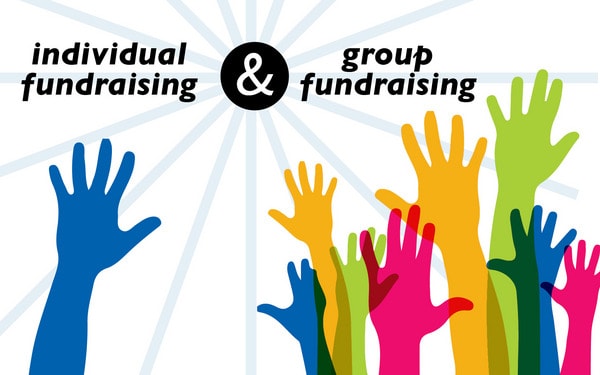Fundraising as an Individual: A Comprehensive Guide to Making a Difference

Introduction to Individual Fundraising
In a world where collective action often makes headlines, individual fundraising as an individual remains a powerful and impactful method for creating change. Whether it’s for a personal cause, a charitable organization, or a community project, individual fundraising allows people to rally support and resources for their passions. With the rise of social media and crowdfunding platforms, it’s never been easier for individuals to tap into their networks and create meaningful campaigns. This article explores the ins and outs of fundraising as an individual, offering practical tips, insights, and inspiration to help you make a difference.
The Importance of Individual Fundraising
Empowering Personal Causes

One of the most compelling aspects of individual fundraising as an individual is its ability to empower personal causes. Whether it’s raising money for medical bills, educational expenses, or a dream project, individuals can harness their passion and experiences to motivate others. This personal connection often resonates deeply with potential donors, as they see the direct impact of their contributions.
For instance, consider someone raising funds for a medical treatment. By sharing their story and explaining why the funds are necessary, they create a narrative that encourages empathy and support. This authenticity can be a significant driving force in individual fundraising as an individual efforts, turning strangers into supporters.
Building Community Connections
Individual fundraising also fosters a sense of community. When you embark on a fundraising as an individual campaign, you invite friends, family, and even acquaintances to participate in something meaningful. This collaboration not only strengthens existing relationships but also creates new connections among supporters who share a common goal.
A great example of this is community-driven fundraising as an individual events, such as charity runs or bake sales. These gatherings encourage people to come together, not just to donate, but to actively participate in the cause. They become spaces for shared experiences, solidarity, and engagement, turning individual fundraising into a collective movement.
Raising Awareness for Important Issues
Another critical aspect of individual fundraising as an individual is its role in raising awareness. When individuals take the initiative to fundraise for a cause, they also become advocates for that cause. Their campaigns can educate their networks about issues they care about, sparking conversations and inspiring action beyond just financial contributions.
For example, someone fundraising as an individual for environmental conservation may share facts, stories, and resources about climate change and its impact. By doing so, they not only raise funds but also inform and mobilize others to consider their role in addressing the issue.
Types of Individual Fundraising
Crowdfunding Platforms
Crowdfunding has revolutionized the way individuals raise funds. Platforms like GoFundMe, Kickstarter, and Indiegogo allow people to create campaigns for various causes, from personal emergencies to creative projects. These platforms provide a user-friendly interface where individuals can share their stories, set fundraising as an individual goals, and update supporters on their progress.
Crowdfunding campaigns can be incredibly effective because they leverage social networks. When you share your campaign on social media, you not only reach your friends but also their connections, expanding your reach exponentially. The key to success on these platforms is storytelling—engaging narratives that draw people in and compel them to contribute.
Hosting Events
Hosting an event is another excellent way for individuals to fundraise. From charity dinners to community sports tournaments, events can engage participants in fun and meaningful ways. Planning an event allows you to bring people together for a cause, creating a sense of camaraderie while also raising funds.
Consider a local charity run where participants pay a registration fee, and sponsors contribute additional funds. Not only does this approach raise money, but it also promotes physical activity and community engagement. The success of an event often hinges on good planning, effective promotion, and an inviting atmosphere.
Direct Outreach
Sometimes, the most effective fundraising as an individual method is direct outreach. This involves reaching out to friends, family, and colleagues personally to ask for donations. While it may feel intimidating, personalized requests can be incredibly powerful. People often respond positively to direct appeals, especially when they can see the genuine passion behind the cause.
Crafting a compelling message is crucial for this approach. Be clear about what you’re raising funds for, why it matters, and how their contributions will make a difference. Personalize your outreach by sharing your connection to the cause and expressing gratitude for their support.
Setting fundraising as an individual Goals
Defining Clear Objectives
Setting clear objectives is essential for any fundraising as an individual campaign. Start by defining what you hope to achieve—whether it’s a specific dollar amount, a certain number of donors, or raising awareness for an issue. Having measurable goals helps you stay focused and provides a benchmark for success.
When establishing your objectives, consider breaking them down into smaller, achievable milestones. This approach not only makes the overall goal feel less daunting but also allows you to celebrate small victories along the way. For example, if your goal is to raise $5,000, you might set interim goals of $1,000 or $2,500.
Creating a Timeline
A well-defined timeline is another critical component of successful fundraising. Determine how long you will run your campaign and create a schedule for milestones, events, and outreach efforts. A timeline helps keep you organized and accountable, ensuring that you’re consistently engaging with your supporters.
Make sure to build in flexibility; unexpected challenges can arise, and being adaptable is essential. Regularly assess your progress and adjust your timeline as needed to stay on track toward your fundraising as an individual goals.
Tracking Progress
Regularly tracking your progress is vital for maintaining momentum in your fundraising as an individual efforts. Whether you’re using a crowdfunding platform or managing an event, keeping tabs on your donations and outreach efforts allows you to identify what’s working and what isn’t.
Create a simple spreadsheet or use fundraising as an individual software to log donations, track outreach, and monitor engagement. Celebrate your successes with your supporters and share updates to keep everyone informed and motivated. Transparency builds trust and encourages continued support throughout the campaign.
Crafting Your fundraising as an individual Message
The Power of Storytelling
At the heart of successful fundraising as an individual is storytelling. A compelling narrative can engage potential donors on an emotional level, making them more likely to contribute. Your story should explain who you are, why you’re raising funds, and how the contributions will make a difference.
When crafting your story, be authentic and personal. Share your motivations, challenges, and the impact you hope to achieve. People are often moved by genuine narratives that highlight real experiences, so don’t be afraid to be vulnerable.
Tailoring Your Message to Your Audience
Understanding your audience is crucial for effective communication. Different groups may respond to various aspects of your story, so consider tailoring your message accordingly. For example, if you’re reaching out to friends and family, a heartfelt personal message may resonate more than a formal appeal.
In contrast, if you’re promoting your campaign to a broader audience online, you might focus on the larger impact of your cause. Highlighting statistics, testimonials, or previous successes can help establish credibility and inspire action among new supporters.
Call to Action
A strong call to action is essential for encouraging donations. Be clear about what you want your audience to do—whether it’s making a donation, sharing your campaign, or attending an event. Use action-oriented language that motivates people to take the next step.
For instance, instead of simply asking for donations, you might say, “Join me in making a difference! Your contribution can help fund vital medical treatments for those in need.” This approach emphasizes the impact of their support and creates a sense of urgency.
Utilizing Social Media for Fundraising
Choosing the Right Platforms
Social media has become a crucial tool for individual fundraising, allowing you to reach a wide audience with minimal effort. However, it’s essential to choose the right platforms based on your target audience. Facebook, Instagram, Twitter, and LinkedIn each serve different demographics and can be used in various ways to promote your campaign.
For example, visual platforms like Instagram are excellent for sharing images and videos that tell your story. On the other hand, Facebook can facilitate event promotion and community engagement. Tailor your approach to fit the unique characteristics of each platform for maximum impact.
Creating Engaging Content
The content you share on social media should be engaging, informative, and shareable. Use a mix of photos, videos, and text to capture attention and convey your message. Behind-the-scenes glimpses, updates on your progress, and personal anecdotes can help humanize your campaign and connect with supporters.
Encourage your supporters to share your posts, increasing visibility and reaching new potential donors. Engaging content not only raises awareness but also fosters a sense of community among your supporters, encouraging them to participate actively.
Engaging with Your Audience
Social media is a two-way street, so be sure to engage with your audience. Respond to comments, answer questions, and show appreciation for contributions. This interaction fosters a sense of connection and encourages supporters to stay involved in your campaign.
Consider hosting live Q&A sessions or updates to keep your audience informed and engaged. These interactions can help build a loyal supporter base that feels invested in your cause, ultimately leading to greater fundraising as an individual success.
Tips for Successful Fundraising
Build a Support Network
No successful fundraising as an individual campaign happens in a vacuum. Building a support network is essential for gaining momentum and reaching your goals. Share your campaign with friends, family, and colleagues, and encourage them to spread the word. Having a dedicated group of supporters can provide motivation and accountability as you work toward your objectives.
Consider forming a team or committee to help plan events, manage outreach, and engage with donors. Collaborating with others not only lightens the load but also brings diverse perspectives and ideas to your campaign.
Stay Organized
Effective organization is key to successful fundraising. Keep track of your goals, progress, and communications in one central location. Whether you use spreadsheets, project management tools, or fundraising as an individual software, staying organized will help you stay on top of your campaign.
Regularly review your strategy and make adjustments as necessary. Staying organized allows you to remain focused and proactive, ensuring that you’re making the most of your efforts.



